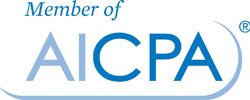Learn how to benefit from education tax breaks
If you, your spouse, or your dependents sign up for one or more post-secondary courses this year, you may qualify for education credits or deductions on your 2015 income tax return. Here’s what you need to know as you begin year-end planning.
What benefits are available. Two credits are available for tuition and enrollment fees you pay in 2015, and an expired deduction for such fees (up to $4,000) is likely to be renewed in a tax extenders bill before year-end.
Remember that credits reduce taxes directly, dollar-for-dollar. Deductions reduce taxable income.
The details. The two credits are the Lifetime Learning Credit and the American Opportunity Credit. Both are available when you pay qualifying tuition and fees during 2015, including amounts paid for any academic period beginning between January 1 and March 31, 2016. You can claim only one of the credits for each eligible student in the same year.
 The Lifetime Learning Credit applies to tuition and enrollment fees you pay for most higher education courses, up to a ceiling of $10,000 each year. The credit is 20% of your expenses, for a maximum tax
The Lifetime Learning Credit applies to tuition and enrollment fees you pay for most higher education courses, up to a ceiling of $10,000 each year. The credit is 20% of your expenses, for a maximum tax  reduction of $2,000. Qualifying students must be enrolled in at least one post-secondary course but need not be pursuing a degree. The amount of the credit is phased out as income approaches an inflation-adjusted ceiling, which is $65,000 ($130,000 for joint filers) for 2015. Only one Lifetime Learning Credit per family is allowed each year.
reduction of $2,000. Qualifying students must be enrolled in at least one post-secondary course but need not be pursuing a degree. The amount of the credit is phased out as income approaches an inflation-adjusted ceiling, which is $65,000 ($130,000 for joint filers) for 2015. Only one Lifetime Learning Credit per family is allowed each year.
 The American Opportunity Credit applies to expenditures you incur in pursuit of a degree or other recognized educational credential. The credit is equal to 100% of the first $2,000 spent plus 25% of the next $2,000, resulting in a maximum credit of $2,500 for each of the first four years of post-secondary education. The credit phases out as income approaches an inflation-adjusted ceiling ($90,000 when you’re single, $180,000 for joint filers in 2015). The American Opportunity Credit is 40% refundable, so you can receive a refund of up to $1,000 even if you have no tax liability.
The American Opportunity Credit applies to expenditures you incur in pursuit of a degree or other recognized educational credential. The credit is equal to 100% of the first $2,000 spent plus 25% of the next $2,000, resulting in a maximum credit of $2,500 for each of the first four years of post-secondary education. The credit phases out as income approaches an inflation-adjusted ceiling ($90,000 when you’re single, $180,000 for joint filers in 2015). The American Opportunity Credit is 40% refundable, so you can receive a refund of up to $1,000 even if you have no tax liability.
In addition to tuition and fees, the American Opportunity Credit can be claimed for costs of required course materials. The credit is allowed for each qualifying person (you, your spouse, and your dependents).
If you think you or a family member might qualify for one or both of these credits (or the tuition and fees deduction, if reinstated), give us a call to review the rules as part of your year-end planning.
© MC 2015
Members



